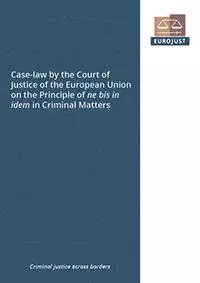
About this publication series: This publication provides an overview of the case-law of the Court of Justice of the European Union regarding the ne bis in idem principle in criminal matters under Article 50 of the Charter of Fundamental Rights of the European Union and Articles 54 to 58 of the Convention Implementing the Schengen Agreement. The document provides guidance on the application of the ne bis in idem principle in a transnational context.
Where relevant, reference is also made to the European Convention on Human Rights and the case-law of the European Court of Human Rights.
Frequency: Annual
Translations: The executive summary of this publication is available in all EU official languages.
